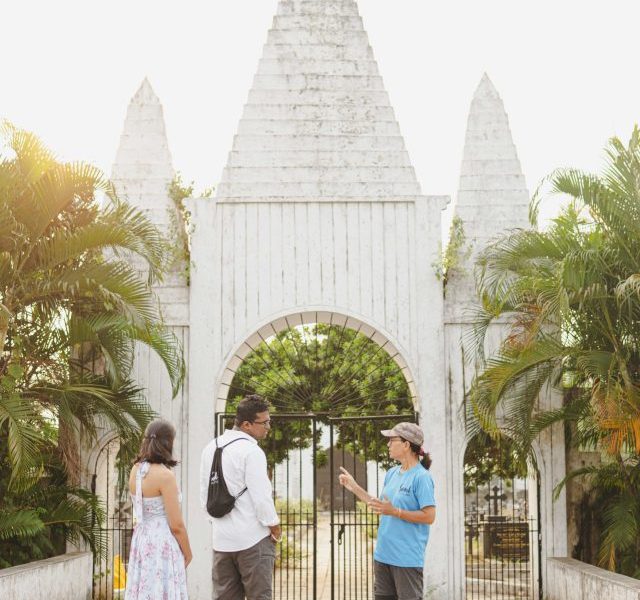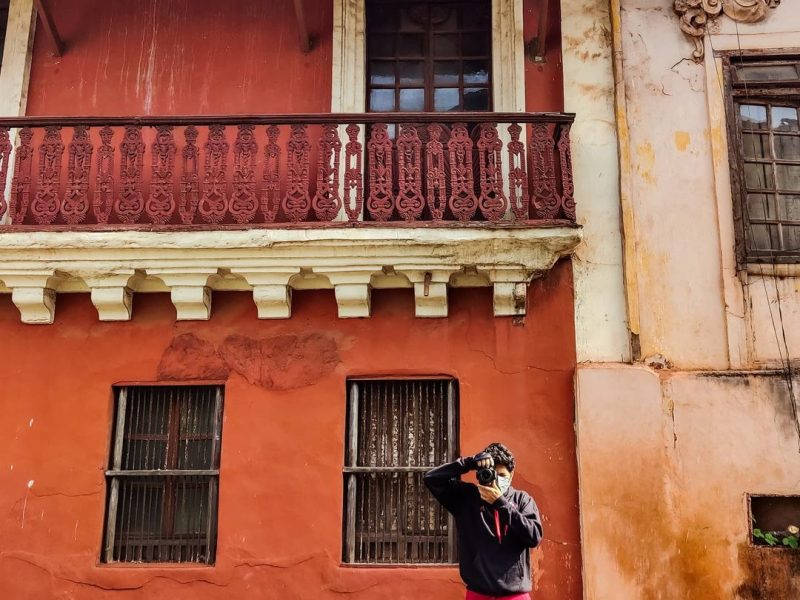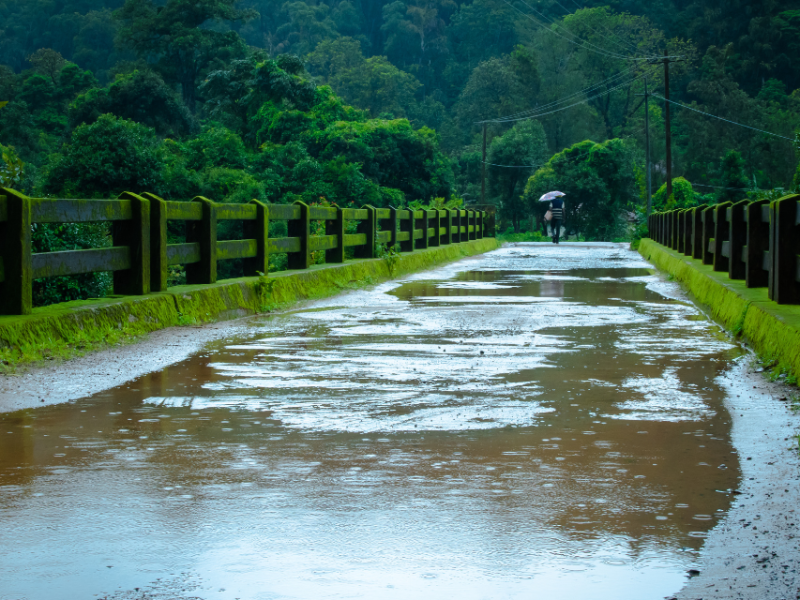When you hear Goa, what comes to mind is sun-kissed beaches, vibrant parties, and the salty breeze of the Arabian Sea. Far from those golden sands and electrifying nightlife, however, lies a whole different side to this beach paradise, which remains largely unexplored by many. Goa is more than just a haven for beach lovers – it is a rich tapestry of culture, history, art, and adventure waiting to be discovered.
Away from the palm-fringed beaches lie ancient forts, breathtaking colonial architecture, buzzing local markets, spice plantations, and lush green landscapes ideal for trekking. Wander through centuries-old churches and immerse yourself in great festivals celebrating the rich Goan heritage.
Irrespective of whether you are a history buff, a cultural enthusiast or just a curious holidaymaker looking to explore the essence of Goa, there is something of meaning and substance just waiting to be experienced.
Goa offers so much more than what meets the eye. In this blog, we will dig deep into unknown treasures behind the white beaches of Goa. Get ready to discover the other side that will amaze, mesmerize, and leave you yearn for more!
Offbeat Things to Do in Goa
A Walk through the Spice Plantations
A trip to the spice plantations of Goa promises to be a sensory journey like no other! Imagine walking through lush, aromatic fields of fields where spices like cardamom, cloves, cinnamon, and nutmeg fill the air. The Goan spice plantations are famous for offering an immersive experience that lets one step into nature’s finest offerings.
Goa spice trading tales date back to the 16th century when the first wave of Portuguese touched these shores. The region’s rich and diverse spices fascinated the Europeans, making Goa a prime global spice hub.
Not long after, the French, the Dutch, and the British came too, aware that the exotic spices were of a quality unmatched anywhere else. Goa has been a prime force in making India the leading spice producer in the world for centuries.
Today a visit to these plantations offers more than a history lesson; walk through rows of fragrant spices, see how they are cultivated, and even play with magnificent elephants! It is truly one of the most unique and rewarding things you can do in Goa, whether learning about ancient techniques or getting splashed by an elephant while having a playful bath. Explore the spice plantations to immerse yourself in natural beauty, history, and an authentic Goan experience.
Goa Butterfly Conservatory
Home to over 100 species of butterflies, the Goa Butterfly Conservatory is an escape into nature, tucked away in the serene hills of Ponda.
The vibrant sanctuary is a treasure trove hidden for anyone seeking to explore Goa beyond its beaches.
As you wander through lovely greenery all around, you will see the enchanting flutter of colourful wings – blues, oranges, and yellows dancing in what can only be described as a living kaleidoscope.
This conservatory stands out in its efforts to protect Goa’s biodiversity. It is a serene getaway where guests can view the butterflies in their natural living environment and read about the amazing cycle of their lives.
Best for families, nature lovers, and photographers, the conservatory guarantees a refreshing, offbeat adventure that brings the richly untapped wonder of Goa into the limelight.
Authentic Goan Food Experience at Bhatti Village
Tucked away in the narrow lanes of Nerul village lies an authentic Goan food experience in the form of a family-owned and operated restaurant – Bhatti Village. It is located inside the ancestral home of the owner and founder, Patrick D’souza.
Bhatti village offers a true Goan experience, from the cozy interiors to dishes you won’t find in any other restaurant. They do not have a set menu, and Patrick goes to the tables personally, discusses his food passionately with the patrons, and suggests the best options. The restaurant operates from a small kitchen run by Patrick’s wife and their son, and it serves some of the best home-style Goan food.
Bhatti village is known to serve dishes in their original forms without alternations, so you can enjoy the Goan cuisine as it was meant to be. They serve many specialties such as fried silver bait fish, prawn curries, real vindaloo, sanna (steamed and savory unfilled dumplings), and Poi.
Whenever you are in Goa, take a detour from the regular tourist traps and dab into some real home-cooked Goan food for the soul.
Embrace Serenity at Sunaparanta
Sunaparanta Goa Centre for Arts is a perfect choice to spend some quality time away from the bustle of mainstream Goa. Located in the panoramic Altinho hill of Panjim, surrounded by greenery, this art space is aimed at preserving the cultural and artistic legacies of Goa.
Founded in 2009 by Dipti and Dattaraj V. Salgaocar, the Centre for Arts is a testament to the shift in the tourism landscape of Goa from mainly beach-centric getaways to more of a complete experience that gives equal importance to the history, art, and culture of Goa.
You can stop by this gorgeous Portuguese villa to catch various exhibitions. Sunaparanta is also home to one of the best cafes in Panjim – Café Al Fresco by Café Bodega. You can end your trip to Sunaparanta by enjoying some refreshing drinks and a delicious lunch at their beautiful courtyard cafe.
Hike to Devil’s Canyon
The Devil’s Canyon, or Devcharacho Kond in Konkani, is a unique experience in Goa with just the right amount of adventure and spooky vibes. If you are done with the overcrowded and largely noisy tourist spots of Goa and looking for something adventurous yet serene, then the hike to Devil’s Canyon is the perfect choice.
Located amidst the dense jungle patches, this hike has the potential to give you the adrenaline rush you seek. And if you are lucky, then you may even witness marvelous black panthers wandering through the jungle.
There are also several caves created by the high-pressure water flowing through here, and if you are feeling particularly adventurous, then you can explore them as well. However, the trekking route is open only from September to December, so plan accordingly.
Shop at the Anjuna Flea Market
The Wednesday Flea Market is the perfect example of controlled chaos, featuring stalls and artefacts from various regions of the country.
It was started in the 1960s by the hippies looking to make some money to extend their stay in Goa, and that gave birth to the counter-culture movement, the essence of which you can still find in present-day Goa.
The market is a treasure trove for shopping enthusiasts looking for unique souvenirs to bring back home. Numerous stalls every week sell everything from handmade jewelry and clothes to musical instruments and local handicrafts.
Sellers from different states, such as Rajasthan, Gujarat, and Kashmir, can be spotted at this popular flea market selling handicrafts, textiles, and other antique items unique to their home states.
Over the years, Anjuna Flea Market has slowly become one of the most visited tourist spots in Goa. It is a charming market with great vibes and international appeal. Check it out during your visit to Goa.
Witness the Remains of Cabo De Rama Fort
It is quite an iconic fort where neglect and ruins are today’s defining characters. Located in the Canacona region of South Goa, Cabo de Rama is believed to be named after Lord Rama. Legend has it that Lord Rama, along with Seeta and Laxman, took refuge here during their 14-year exile.
The Hindu Soonda Rulers built Cabo De Rama, which was later captured by the Portuguese in 1763. They fortified it for defense, improving their stronghold on Goa’s western coastline.
Cabo De Rama has a very rustic vibe as it has deteriorated over the years due to natural elements such as coastal winds, heavy rains, and humidity. After the Portuguese abandoned it, the fort still needed to be maintained or restored.
Today, only the ruins of the fort remain, and it is probably why not many tourists can be found here, making it a perfect location for a slow afternoon spent reminiscing the history of Goa.
Chorao Island
Goa is inherently known for its beaches and electric nightlife. However, a little-known fact about Goa is that it is home to an archipelago of 17 islands, each with its unique property rich in flora and fauna. The largest and probably the most distinctive of them all is the Chorao Island.
The famous Dr. Salim Ali Bird Sanctuary is located on the Island, which is home to all kinds of migratory and local bird species, making it a haven for birdwatchers. One of the most unique features of the Island is the natural mud bath.
It is believed that mud bathing has therapeutic properties, beneficial for the skin, and is a relaxing way to connect with nature. Many nature enthusiasts come to Chorao Island to spend some quality time away from the hustle and bustle of mainland Goa.
Enjoy Kayaking through Mangroves in Goa
Goa’s backwaters are a hidden gem often overshadowed by the beaches and pal-fringed shoes. However, Goa has an extensive network of serene backwaters that offer a unique experience to visitors.
Kayaking down the hidden waterways deep in the mangroves and listening to various birds sing can be quite an exceptional experience.
You can also spot many local riverside Goan villages on your kayaking expedition. You can witness their lifestyle and fishing practices, and if you are lucky, you may even witness floating markets where fishermen sell their fresh catch.
The backwaters of Goa also host kayaking festivals, with people coming from all over the world to experience the natural beauty and thrills of a ride through intricate waterways. So whenever you are in Goa, make sure Kayaking through the mangroves is a part of your itinerary.
Explore Fontainhas
The beautiful Latin Quarter Fontainhas is a Heritage Zone located on the banks of Ourem Creek in Panaji. Named after the natural springs near it, Fontainhas is widely known for its rich cultural heritage and old-world charm.
Built under Portuguese rule in Goa, Fontainhas is brought alive through the bright colors of houses, the narrow streets, and the classic Portuguese-style tiled roofs.
Fontainhas also houses a brightly whitewashed Chapel of St. Sebastian with a rare crucifix where Christ’s eyes are open, aimed to inspire the faithful.
It also hosts an annual street festival in February, in which the streets are filled with art, music, and food, honoring the Goan culture and traditions.
Fontainhas is recognized for its charming art galleries and quaint cafes making it a hub for artists as well as travelers looking for an offbeat Goan experience.
Honorable Mention:
Visit a typical Goan poder (Goan bakery)
One of the most loved figures in Goa’s cultural heritage is the poder or traditional Goan baker.
Generation by generation, these bakers have been a part of the fabric of life in Goa. These bakers have been delivering fresh bread, like pao and poi, to homes and markets for years.
Traditionally, these breads are made in a wood-fired oven, filling the air with its irresistible allure.
These fresh traditional breads sell out almost immediately upon coming out of the oven. Today, only a few of these old-fashioned bakeries are left in existence, and so these bakers offer not only culinary experience to the visitors but are also a part of Goan history.
Note – If you’re planning to fly to Goa from anywhere in India, book your flight with SuperbMyTrip and enjoy incredible discounts!



